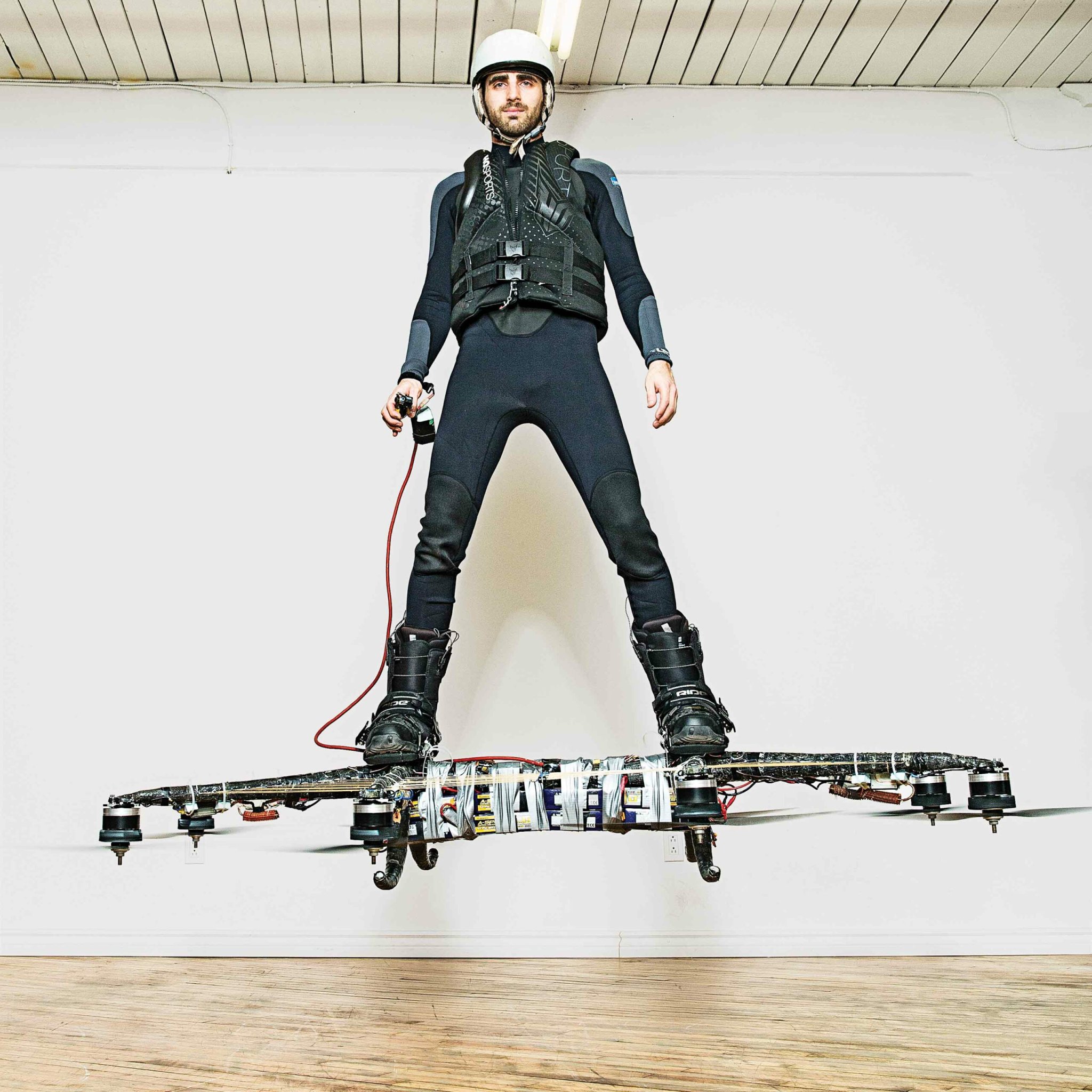

On May 22, 2015, Lake Ouareau in Quebec, Canada, was peaceful and sunny. Then something straight out of science fiction roared across the water. Alexandru Duru, balancing on a homemade hoverboard 16 feet above the surface, flew a distance of 905 feet, 2 inches—smashing the previous Guinness World Record (a measly 164 feet) for the farthest hoverboard flight. “Riding it is a feeling that no other machine can provide,” Duru says. “Nothing comes close.”

Duru, a software engineer, has devoted the past five years to perfecting his hoverboard design, called Omni. His first attempt was little more than a piece of wood strapped to a motor and propeller. The current iteration—refined by his new company, Omni Hoverboards, and local university students—is made from carbon fiber but still has a DIY feel: It achieves lift with eight large propellers, powered by 16 lithium-polymer batteries.
Duru and his team are now developing a second prototype that’s sleeker, more powerful, and safe enough for an eager public. He plans for it to be ready for distribution by 2017. “Most people imagine a future with hoverboards in them,” he says. “I think it’s going to happen for sure.”

Omni’s Specs:
- Inventor: Alexandru Duru
- Company: Omni Hoverboards
- Maturity: 3/5
This article was originally published in the May/June issue of Popular Science. Check out the other 2016 Invention Award winners here.
